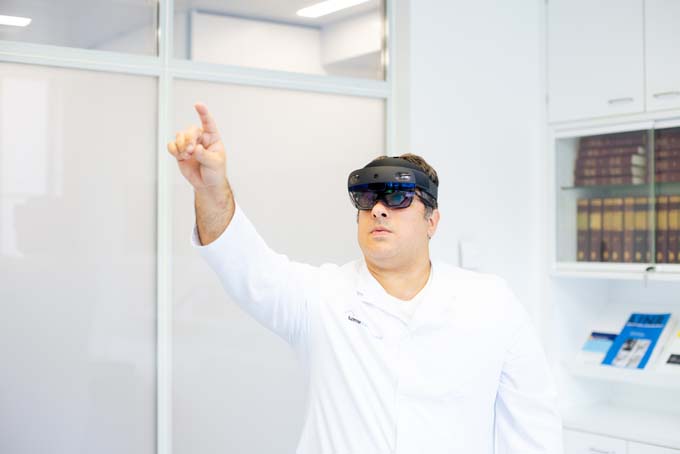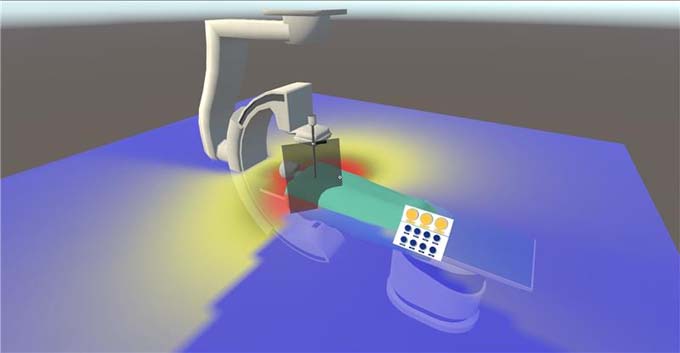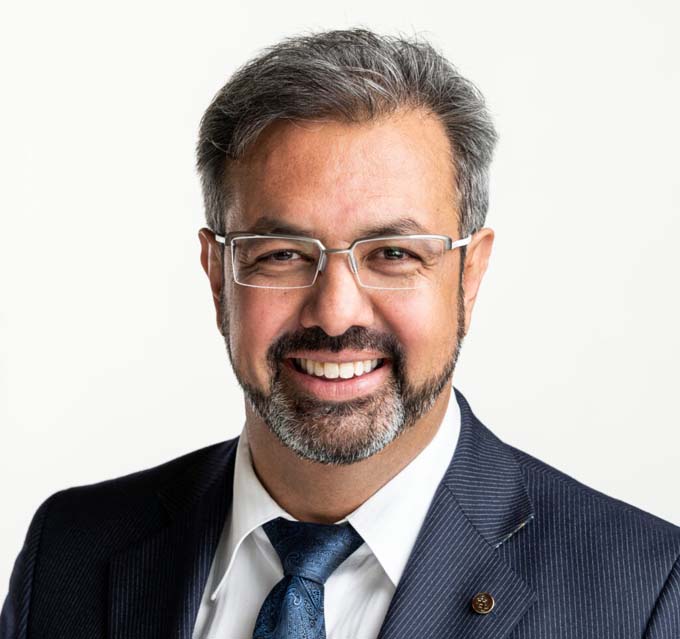"Augmented reality" helps protect against X-rays
Researchers from the Lucerne University of Applied Sciences and Arts, Lucerne Cantonal Hospital and the University of Lucerne are developing innovative augmented reality training to better protect healthcare professionals from X-rays.

In a hospital, various medical professionals are exposed to an increased risk from X-rays, including radiologists. For this reason, they receive special radiation protection training. Scientists from the Lucerne Cantonal Hospital (LUKS), the Department of Informatics at the Lucerne University of Applied Sciences and Arts (HSLU) and the Faculty of Health Sciences and Medicine at the University of Lucerne are currently researching how this could be enriched with interactive, digital teaching techniques. As part of a joint project, they are developing and testing training courses based on augmented reality (AR) technology - that is, the projection of digital content into the real world. Special AR glasses are used for this. For the first time, these allow users to virtually "see" the simulated radiation exposure in the room and practice how to protect themselves even better against it.
AR: Location-independent, safe and repeatable
"The biggest challenge in radiation protection is that you can neither perceive the radiation itself nor the effectiveness of your own protective behavior in your everyday work," explains Dr. phil. Thiago Lima, senior diagnostic medical physicist at LUKS. He is conducting the project as part of his postdoctoral studies at the University of Lucerne; it is partially funded by the Swiss Society for Radiobiology and Medical Physics (SGSMP) research grant. "AR enables employees exposed to radiation to learn important practices to further reduce occupational health risks," Lima says. For Tobias Kreienbühl, project manager on the part of HSLU, augmented reality also has great potential in medical education. "One important advantage is that the technology is independent of time and place," he elaborates, "so you don't have to rely on specially equipped premises for training." Realistic and without safety concerns, exercises can be repeated often.
The real and virtual world
The training method developed in the project works like this: The medical professional puts on the AR glasses, which are equipped with cameras and various sensors. The application that runs on them was developed at HSLU. So, through the transparent glasses, one sees both the real objects in the room and virtual overlays. The latter include an X-ray machine, an examination table with a patient and a lead shield. Those who wear the glasses can change the position of the virtual shield by means of movements. Such shields, which block X-rays, can also be used by specialists during real operations.

Radiation exposure visible at the push of a button
In training, you are then given the task of placing the virtual protective shield, yourself and an assistant who is present in real life, in the best possible position for a particular operation. "That means in such a way that the radiation exposure for both people would be as small as possible," explains Tobias Kreienbühl. The AR glasses can also display the - simulated - intensity of the radiation at any point in the room at the touch of a button. This is done with the help of a virtual color gradient. Red stands for high exposure, blue for low exposure. This makes it easy to see that the radiation is emitted into the room by the patient in a spherical shape.
After the spectacle wearer has performed the specified task, the radiation simulation is displayed and the result is checked. Ideally, everyone present is in the blue range. Different runs can be tested, positions corrected; the protective shield can also be repositioned. The color gradient adjusts in real time so that the effect of each change is immediately visible.
The research team will try to further develop the application. "Our goal is to prove the effectiveness of the training versus traditional training without augmented reality," Lima said. If successful, LUKS will look at how augmented reality can be incorporated into radiation safety training in the long term.
Source: www.hslu.ch









